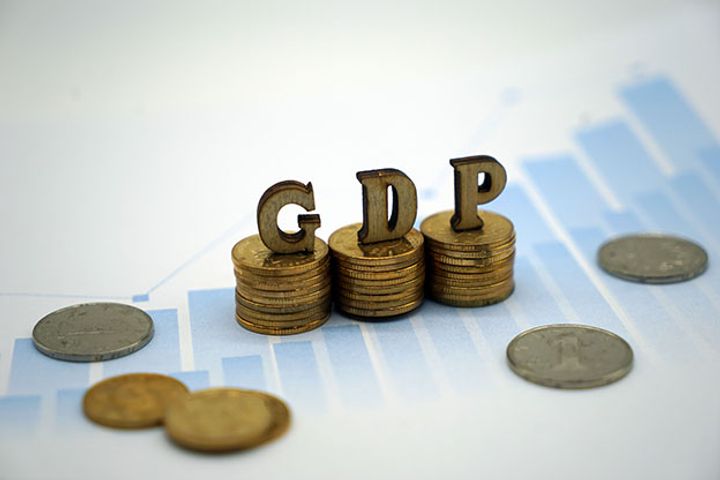 China GDP Growth Nudged 7% This Year, No Economic Hard Landing, CASS Projects
China GDP Growth Nudged 7% This Year, No Economic Hard Landing, CASS Projects(Yicai Global) Dec. 24 -- China's gross domestic product will grow by around 6.6 percent this year, continuing its generally steady growth, the Beijing-based Academy of Social Sciences said at a conference today. The economy will progress within a reasonable range with basically stable employment and commodity prices, the academy added, noting a hard landing is unlikely.
Several institutes under CASS gathered at the 2019 Blue Book of China's Economy Release and Chinese Economic Situations Report Meeting in Beijing today. China has attained growth of 6.8 percent in the last half and maintained it in the mid- and high-speed range between 6.7 percent to 6.9 percent for 12 straight quarters, per the meeting report.
China's labor supply has continued to contract each year since 2012 and the growth rate of capital stock has also shrunk as fixed asset investment growth has slowed. These factors are unlikely to change significantly in the short term, which means the potential growth rate of China's GDP next year will still fall slightly, but within a suitable range, per the report.
The country's determination to stabilize investment and secure its growth is firming. Infrastructure investment still has great scope. The realty business is tending toward rationality and stability. China's efforts to promote reasonable and effective investment are beginning to bear fruit.
SOEs Hit Speed Bump
Adverse factors have hit the brakes on growth of investment in state-backed enterprises. Local governments are undergoing investment mechanism reform and still need a long time to accomplish this, so investment they lead will hold its decline in consequence. US-China trade tensions are also casting a chill shadow on investment.
China's fixed asset investment will reach CNY81.4 trillion (USD11.8 trillion) with a nominal annual growth of 5.6 percent, down by nine-tenths of a percentage point from last year, the report projects.
CASS forecasts sound consumption for the country next year. The house price surge and online loans for consumption have lifted China's household debt-income ratio by 20 percentage points over the past five years. Debt continues to rise, vitiating the supporting function of disposable consumer funds, and this will exert a certain impact on consumption.
Institutional mechanisms that stunt the growth of potential consumption also persist. Homogenous service products meet customers' demands for variety and high-quality only with difficulty and this sets a great obstacle in the way for releasing potential consumption, CASS notes.
Retail sales of consumer goods will reach CNY43.3 trillion in a nominal annual rise of 8.4 percent, with growth down from last year by seven-10ths of a percentage point, CASS projects in its report.
China's export trade will keep growing but at a slower speed, per the report. Despite the rise of protectionism, China continues to implement a more proactive opening strategy. The trend to develop an open economy in the world is a must, and the country's international economic and trade cooperation is deepening.
Developing Guarantees
China will cooperate widely with Europe, the US, Japan and other developed economies, as well as most developing countries. International cooperation with developing countries and their economic progress are key guarantees of China's export growth.
Economic and trade cooperation with the Belt and Road nations is gradually expanding, with its influence showing exponential development. This mode of cooperation is crucial to China's export growth. The effects of the transformation and upgrade of the export trade are clearly evident, CASS says in the report.
China's consumer price index will be 2.5 percent next year, up about one-third of a percentage point from this year, sustaining a mild increase.
The producer price index will be 3.6 percent next year, down four-tenths of an annual percentage point, which means upward pressure on industrial prices will further ease next year.
Editor: Ben Armour